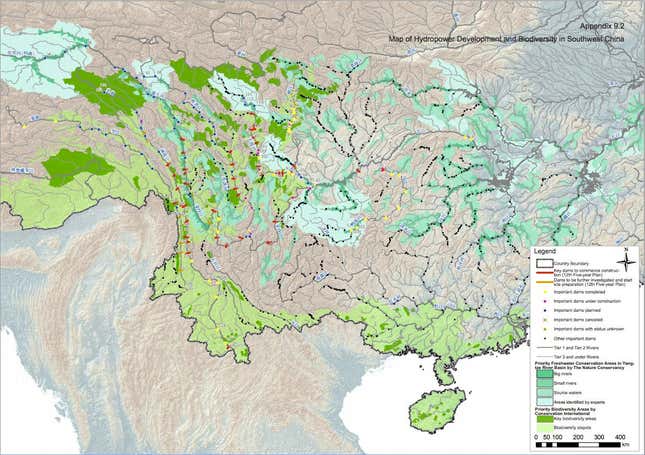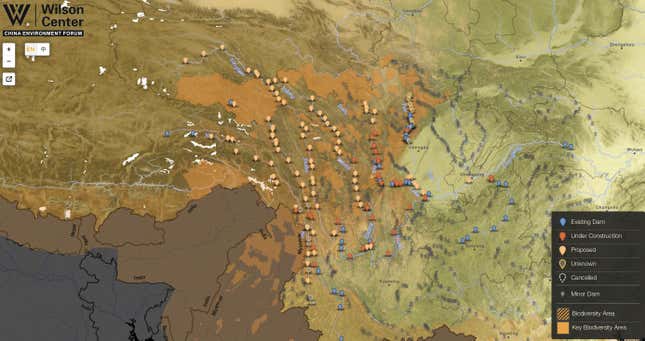
China’s dam rush is well underway. To meet its renewable energy goals by 2020, the country plans to increase hydropower capacity to 290 GW, more than the installed capacity of all the countries in Europe combined. Already home to half of the world’s “mega dams,” dams over 15 meters tall, China is planning to build about 181 dams on rivers in the southwest alone, according to a report by a consortium of Chinese environmental groups. The drawbacks to large-scale engineering on China’s rivers have been well documented, especially since the building of the Three Gorges Dam, the world’s largest hydropower project and one that officials admitted caused “urgent problems.” In the southwest, where pollution from expanding cities is already a problem, more than 70 of planned dams overlap areas that the environmental group Conservational International identifies as “biodiversity hotspots,” threatening local eco-systems, according to this interactive map from the Wilson Center:

Some scientists argue that water reservoirs created by dams can change seismic activity and trigger earthquakes earlier than they would have occurred, a danger in a region that’s already prone to quakes. Cascading dams such as those planed on the Nu river which crosses Yunnan and into Burma, may cause chain reactions that expand the impact of an earthquake, according to the group of Chinese environmental groups. Moreover, several of the rivers where dams are being built are part of major streams in Burma, India, Bangladesh and other parts of Southeast Asia. Still, there’s little sign the dam rush will abate. Officials are more often than not biased toward the projects, a symptom of what some call China’s “hydro-industrial complex.” Aside from being able to cite their contribution to renewable energy and flood control, local officials use dams as an means of economic development, industrial expansion, construction, and revenues.